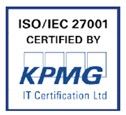Considerable Compensation Awarded in the Meyer Decision
20 December 2023
Authors: Vilhelm Schröder and Panu Siitonen
1 Introduction
On 16 October 2023, the District Court of Southwestern Finland handed down a judgment in a case concerning Meyer shipyard (R 21/1469) related to corporate espionage, a violation of a trade secret, and a copyright offence. The case was exceptional for multiple reasons, including the large number of documents stolen from Meyer’s systems, the possibility of them being handed over to a Chinese competitor, as well as the significant compensation awarded to Meyer in the proceedings.
2 The Course of Events
The defendant, who was a maritime engineer, had worked for Meyer shipyard in Turku, Finland, from 1979 until the end of 2017, after which he had retired. Meyer shipyard designs and builds large luxury cruise ships. During his retirement, the defendant signed a consulting contract with a client of Meyer shipyard, Royal Caribbean Cruises Ltd. (“RCCL”), for approximately five months in 2018. While this contract was still in force in June 2018, he signed another consulting agreement, which included significant compensation and benefits, with the Chinese company China Merchants Industry Holdings C (“CMIH”) through his newly founded consulting company. He begun to do consulting work for CMIH via this company at the beginning of July same year. CMIH is a government-owned and funded company that has a subsidiary shipyard China Merchant Heavy Industries (“CMHI”), which mostly builds smaller cargo ships and ferries. The consulting contract entailed that the defendant assists CMIH in developing their cruise ship business and offers them new innovations and technology.
Suspicions about the defendant’s misconduct arose shortly after the commencement of his consultant work for CMIH, when he posted a photo of his workstation in China on Facebook. The photo had captured the defendant’s computer screen, and the defendant’s former colleagues noticed that the icons of the screen represented Meyer’s project folders and trade secrets. This set off internal investigations at Meyer shipyard.
During the investigation, it became clear that the defendant had copied files from Meyer’s internal data system during the final months of his employment relationship. The copying had begun in July 2017, at the latest, and continued until the end of his employment.
During his consulting relationship with Meyer’s client RCCL, which lasted until the end of June 2018, the defendant had access to another one of Meyer’s data systems, Kronodoc, used for sharing documents with clients. He continued copying more of Meyer’s files from the system even after the end of his consulting agreement, as, at the time,he still had access to Kronodoc for approximately two weeks. RCCL also notified Meyer that the defendant had accidentally uploaded a file containing a schedule for Meyer’s upcoming ship project to RCCL’s database. This sparked correspondence between the defendant and Meyer, after which Meyer filed a request for investigation with the police.
3 Criminal Proceedings
The prosecutor demanded that the defendant be found guilty of a copyright offence as well as a violation of a trade secret and corporate espionage. Since these crimes require that copyrighted material or trade secrets have been misused, one of the main questions the court had to consider was if the downloaded documents were in fact protected by copyright and/or constituted trade secrets.
Copyright Offence
The court held that some of the documents downloaded from Meyer’s systems did constitute works within the meaning of the Finnish Copyright Act (404/1961), because they had been created in the context of designing a state-of-the-art cruise ship worth millions of euros. This requires innovation, and the drawings and other visual elements represent the creative efforts of their creator, therefore meeting the originality requirement of copyright protection.
In addition to literary and artistic works, the Copyright Act also protects any related rights. Section 49 of the Copyright Act lays down provisions for the protection of a catalogue, a table, a programme, or any other product in which a large number of information items are compiled, as well as a database the obtaining, verification, or presentation of which has required substantial investment. The court held that the files downloaded by the defendant constituted catalogues and databases within the meaning of Section 49 of the Copyright Act. Based on the evidence, the information in Meyer’s system and Kronodoc both had required decades of significant investments from Meyer and its predecessors alike.
Since the documents contained materials protected both by copyright and related rights, the court also evaluated whether the defendant had acted in a way that constituted a copyright offence. A copyright offence, as set forth in Section 1 of Chapter 49 of the Finnish Criminal Code (39/1889) is committed by a person who for gain and in violation of the Copyright Act and in a manner conducive to causing considerable harm or damage to the holder of the violated right, violates the right of another person to a literary or artistic work, shall be sentenced for a copyright offence to a fine or to imprisonment for up to two years. In addition to literary or artistic works, the same applies to related rights discussed above.
Firstly, the court found that downloading the documents onto a laptop or an external hard drive constituted reproduction of the protected works, catalogues, and databases of Meyer within the meaning of the provisions of the Copyright Act. Sections 2 and 49 of the Copyright Act both state that copyright protection and protection of related rights provide their holder an exclusive right to reproduce the work, and the defendant had infringed this right.
Secondly, this violation of the Copyright Act must have been committed for gain. Given the circumstances — the defendant founding his consulting company shortly after retiring as well as unlawfully reproducing works belonging to Meyer — the court found that it was clear that the defendant had acted for personal gain. Selling of the copied files was not required, as using the files while working for his consulting company was enough to fulfil the condition of acting for personal gain. In addition, the defendant had also partially admitted to having downloaded the documents to be used in his future consulting ventures.
Thirdly, the special conditions in the definition of a copyright offence in the Criminal Code require that the act causes considerable harm or damage to the holder of the violated right. The court held that the copying of the documents had caused considerable harm to Meyer in view of the vastness and sensitivity of the information copied. The numerous witness testimonies also provided insight into how incremental the copied materials were to Meyer’s business. If a competitor got hold of the materials, they could leap over these years of trial and error included in the designing process of a large cruise ship, which had required significant investments.
The court also considered it to be clear that there was no valid reason for the defendant to have downloaded such a vast number of documents as, according to witness testimonies, he would have needed approximately 100–500 documents in his work tasks. The testimonies also showed that the defendant had acted with intent, since he had been well aware of the confidential nature of the copied documents.
Trade Secret Violation
Both parties agreed that the information downloaded were trade secrets of Meyer. Pursuant to Section 2 of the Finnish Trade Secrets Act (595/2018), a trade secret is not generally known or easily found as a whole and, because of this, has economic value in business, and its legal holder has taken reasonable measures to protect it.
Witnesses who testified had evaluated that approximately 88 per cent of the copied files had contained trade secrets. The large number of copied files also supported the finding that the files together formed a trade secret. As discussed above, many of the files also contained copyright-protected works such as drawings and visual elements, including the general arrangements of the entire ships. In addition to the copyright-protected works, the copied files included statistics, technical breakdowns, weight calculations, schedules, and economic information. According to witness testimonies, these materials contained information that sets Meyer apart from other shipyards in the same field, which strongly supported the conclusion that the material copied did contain trade secrets.
Witness testimonies also supported the fact that Meyer had taken measures to protect the information from outsiders, such as access rights management and continually reminding employees about the importance of secrecy as well as highlighting that company data cannot be saved on personal devices. It was also clear that Meyer would never have wanted the copied materials to end up in the hands of a competitor and the materials contained information that differentiated Meyer from other shipyards worldwide therefore having a significant economic value.
A violation of a trade secret is a criminal offence under Section 5 of Chapter 30 of the Criminal Code. Pursuant to this provision, a person who, to obtain economic benefit for himself or herself or another or to cause damage to another, unlawfully reveals a trade secret of another or unlawfully uses such a trade secret, having gained knowledge of the secret while in the service of another or while performing a task on behalf of another or otherwise in a confidential business relationship shall, unless a more severe punishment for the act is provided elsewhere by law, be sentenced for a violation of a business secret to a fine or to imprisonment for up to two years.
Thus, the defendant had committed a violation of a business secret because he had obtained trade secrets while in the service of Meyer and in a confidential business relationship with RCCL, after which he had at least unlawfully used those trade secrets for economic gain for himself and his consulting company.
Corporate Espionage
The defendant was also found guilty of corporate espionage since Section 4 of Chapter 30 of the Criminal Code holds that corporate espionage can be committed, among other means, by unlawfully acquiring information constituting a trade secret belonging to another by copying a document or other record with the intention of unlawfully revealing such a secret or unjustifiably using it.
The fact that the defendant had copied files from Kronodoc after the termination of his consulting relationship with RCCL did constitute an unlawful acquisition of information regarding a trade secret, and the files which were copied onto a laptop belonging to his company together with the defendant’s statements regarding planning on using the material in his business activities showed that he also intended to use those trade secrets unjustifiably. The way the defendant had named the folders of files he had uploaded, for instance, TO CMHI, GIVEN, TO BE GIVEN, also strongly supported this conclusion.
4 Compensation, Damages, and Other Consequences
The defendant had passed away during the criminal proceedings, wherefore the above-mentioned charges were dismissed. His estate and his company thereby became the defendants in the proceedings.
Pursuant to Section 11 of the Trade Secrets Act and Section 57 of the Copyright Act, he whose trade secrets and copyright-protected works have been infringed, is entitled to a reasonable compensation. Determining the amount of compensation to be awarded to Meyer proved difficult since the basis of the compensation is often the amount that it would cost to legally license the materials in question. However, a shipyard would never, according to the witnesses, license this amount of their information regarding shipbuilding. Expert witnesses in the case evaluated the materials to be worth 460 million euros. The evaluation was based on the assumption that the materials would end up in the hands of Meyer’s competitors and they would be able to benefit from the development work done by Meyer. The file names as well as Meyer’s project folder seen on the defendant’s computer screen in China strongly indicated that the documents had ended up in the hands of competitors, namely CMHI. However, providing conclusive evidence of this would have been very difficult, and the award of compensation also does not require that the infringed party prove the losses.
Meyer eventually settled for demanding 5 million euros in compensation, which the court saw appropriate in proportion to the defendant’s actions. In addition to the compensation, the court also awarded Meyer 95,000 euros in damages and ordered that the defendants pay almost 500,000 euros of Meyer’s costs. The consulting company’s laptop and external hard drive used to commit the crimes were also ordered to be confiscated.
The decision is final.







